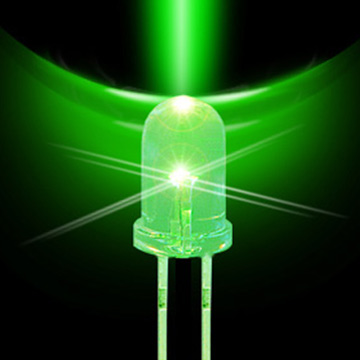- Exhibit Lighting
- Prism Original Series
- Lovo™ Edge Series
- LED Display Arm Lights
- LED Light Stands
- LED Flexible Strip Lighting
- LED Light Panels & Signage
- LED Down Lights
- High Bay LED Lighting
- LED Rigid Strip Lights
- LED Aluminium and Silcone Profile Extrusion
- Connectors & Cabling
- LED Accessories
- LED Controllers
- DMX LED Lighting
- MADRIX Lighting Control
- Programmable Lighting
- LED Lamps
- Power Supplies
- Battery Solutions
- Clearance
- More Lighting Options
- Commercial Lighting
- Retail Lighting
- Lovo™ LED Series
- What We Do
- Who We Are
- Resources

THE LED
Wednesday, May 16th, 2012
LED stands for light emitting diode. These diodes can be found in many common devices such as flashlights and alarm clocks and offer many advantages over a traditional light bulb. LED’s use a simple electrical structure to produce light. Here’s a look at how they work and their practical applications.
How LED’s Work
A diode is a semi-conductor device that conducts electricity in one direction. Inside the housing of an LED is a semi-conductor chip that is divided into two regions, one for positive charges and one for negative. These regions are separated by a junction. The LED is connected to a circuit via the two-wire prongs that protrude from the bottom. When voltage is passed through the circuit, the negative charge of the power source repels electrons from the negative region into the positive region. Once there, opposite charges attract and create an electromagnetic energy that emits a photon of light.
Practical Applications of LED
LEDs have many advantages over incandescent light bulbs that make them extremely useful. They do not rely on a filament that will burn out (500-2,500 hours) and have a much longer burn time around 100,000 hours. LEDs also rely on small plastic housing that is much more durable than a glass light bulb and will not break as easily. They don’t heat up the way a traditional light bulb does and convert energy far more efficiently into light, most of the energy in an incandescent light is heat not light.
LEDs come in a variety of different colors. Different colors are produced by using different semi-conductor material that allows for the production of different frequencies of light.
You may see LED’s in everyday items like flashlights or head lamps, clocks, watches, stock tickers and automobile displays. They are becoming more popular in the trade show industry, replacing both incandescent (halogen) and fluorescent light.
A Brief LED History Lesson
The origin of the LED is a debated topic. For a long time, Nick Holynyak and a group of American researchers were credited with inventing the device in 1962. However, in 2007 information emerged that the LED was actually invented far earlier, in the 1920s by a Russian radio technician Oleg Vladimirovich Losev . However, it is safe to say that Holynyak invented the first practical LED that paved the way for LED use today.
The Future is Bright!
Since its invention, the LED has been an ever-improving technology becoming more technologically advanced, less expensive and more widely available. LED researchers continue to experiment with new materials and expand LEDs into new applications. LED’s will become the number one light source in the world within five years.
